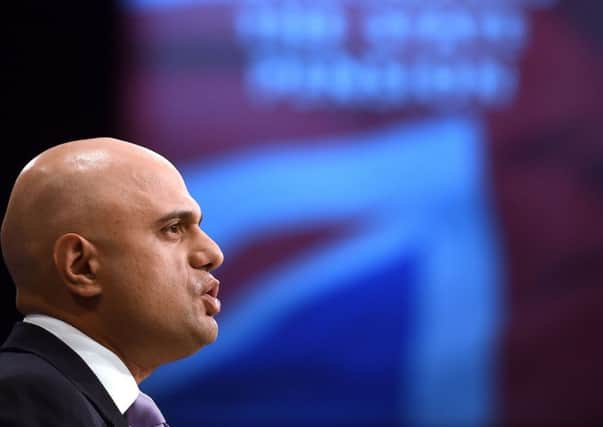David Maddox: Tories looking more like new Labour


As Mr Javed was followed by culture secretary John Whittingdale – who famously headed the Iron Lady’s political research department in the 1980s – that feeling that politics has rewound three decades following Jeremy Corbyn election as Labour leader was very much in play.
After all we now have a Bennite, hard left Labour Party riven with divisions as we did in the 1980s, and what happened then? The Tories tacked to the right, privatised all and sundry, and carried out a major onslaught on benefits and trade unions.
Advertisement
Hide AdAdvertisement
Hide AdBut listen carefully this week and the political reality is that the Tories have learned more from Tony Blair than they did from their political heroine. In his speech Chancellor George Osborne – who looks more and more like a de facto Prime Minister and the next leader – explicitly told the conference that now was not the time to abandon the centre ground.
He called on them to seek the “common ground” and made a direct appeal to “ordinary working people who voted Labour” at the last election to switch.
When the Tories moved rightwards in the 1990s and were taken over by their eurosceptic wing after the 1997 thrashing at the polls, Blair chose not to take advantage of the chaos in their ranks by pushing Labour left. Instead he placed the party firmly on the centre ground and gave the Conservatives no room to get a foothold back on the road to power.
This allowed Labour to be in power for 13 years and arguably it took the combination of an appalling economic downturn and a shift to the left under Brown to begin to undo the notion that Labour had taken the Tory mantle as the natural party of power.
The message in Osborne’s speech is also one which Prime Minister David Cameron is repeating at every event he attends. And, if his words at the Scots Night are anything to go by, he thinks that a centre ground moderate Tory party can even have its day north of the Border with a “fading Labour Party” and Lib Dems “who have left the field”.
The reason for what is fast becoming a common ground mantra is that many in the Conservative ranks would like to repeat the experiment Thatcher carried out in the late 1980s when she took the party to the right. They want a harder line on Europe, they want deeper cuts, and pledges on issues like international aid abandoned. They think a left wing Labour Party would be so unpalatable to the electorate that they will once again be able to do what they want.
Osborne has a longer term view. Not only does he want to be leader at the next election but he wants at least two victories as Prime Minister. He wants the Tories to be so embedded in the centre ground that it is almost impossible to shift them. He knows that shifting to the right sows the seeds of destruction as it ultimately did with Baroness Thatcher.
So his message that the Tories are now the “Labour Party” is a bold and powerful one and is supported by tax cuts and a much higher minimum wage. He will struggle though to convince those who are losing out with tax credit cuts but will hope that higher earnings will feed through.
If the strategy works and Labour don’t ditch Corbyn it could spell disaster for Labour and they could be down to a two-digit number of seats in 2020.